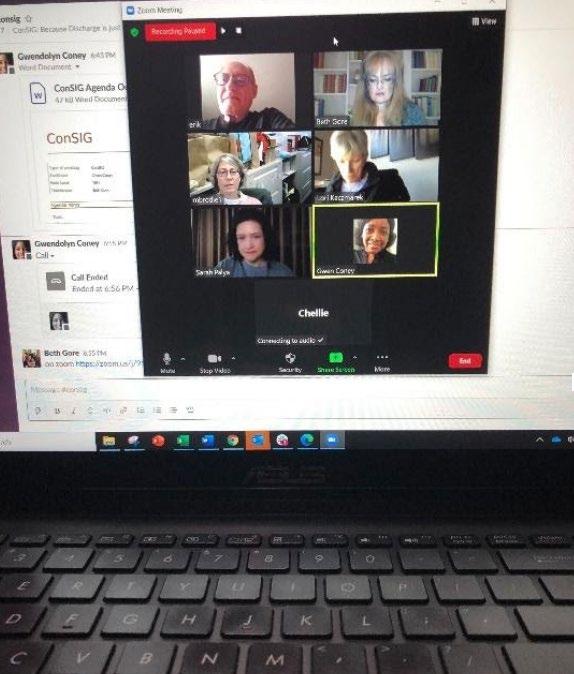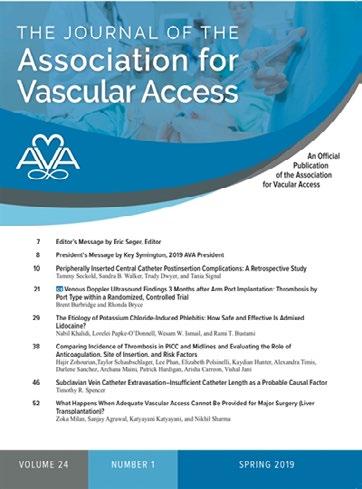
6 minute read
Beyond Acute Care SIG: Best Expectations, Worse Outcomes (Part II
BEST EXPECTATIONS, WORSE OUTCOMES (PART II):
A PATIENT AND FAMILY EXPERIENCE WITH RURAL HOME INFUSION
Erik Samarpan, RN, VA-BC™, LNC | Board Certified in Vascular Access; Legal Nurse Consultant; Oncology Credentialed; Infusion Specialist; BACSIG (Beyond Acute Care SIG) Director-at-Large
Continued from the November 2020 IQ Names changed for privacy To quickly recap our case presentation from the November 2020 issue of IQ, Jose is an 8-year-old Hispanic male with recently diagnosed Duchene’s Muscular Dystrophy (DMD) residing with his family in a rural, mountainous rural area of Northern Arizona. His mother, Marie, speaks English and acts as the interpreter when Jose does not understand my explanations and instructions. Unfortunately, Jose has had less than positive experiences related to the care and management of his implanted port. He also has had difficulties with the infusion of the Axon skipping medication he receives intravenously on a weekly basis (please refer to the November 2020 IQ for additional background).
There are many questions that must be considered in a case like Jose’s. What does it mean when we ask an 8-year-old child to become their own advocate? How can this child question a nurse and other healthcare professionals caring for him or her? How can we help our patients become comfortable advocating for themselves particularly with the implied structural misbalance between the child and the authority? Is this not the same potential problem in both the acute and non-acute setting? Doesn’t this apply to adult patients as well?
We can look to our peers, guidelines, and the evidence for answers. One important technique to consider is to integrate Neuro Linguistic Programming (NLP) into our practice. NLP techniques teach us how to incorporate such concepts as:
• Thinking affects results • Thinking affects our (subjective) experience • Use of persuasive language • Using body language • Influencing behavior and eliciting specific responses by use of advanced tools of verbal and non-verbal communications
It is important all patients, but especially children, to plan extra time to describe what is happening. It is effective to use pictures and basic pathophysiology concepts that are specific to the patient and are based on individual factors, such as age, cognitive awareness, experiences, and language. There are different ways to explain the function of a port, its location and even the rationale behind flushing protocols. Conversely, explaining the possible negative outcomes when a healthcare professional fails to use proper accepted standard access and maintenance techniques may assist in the patient’s understanding of cause and effect. The goal is for the patient to receive excellent care and preventing undesirable outcomes.
Teaching the adult caregiver at the same time as the child allows for a less threatening environment for the child. When the child hears their caregiver asking for clarification on issues, it creates a shared sense of learning and responsibility. Neither are put at the disadvantage of feeling inadequate. This shared learning respects the child’s autonomy, to the extent possible, and empowers the child. Ultimately, the child feels more comfortable asking questions and for help.
Each time I see Jose, I reinforce the flush technique by scrubbing the site with the Chloraprep for five seconds or using a circular pattern of scrubbing. I then asking him if that is “ok”? His response now is no; You have to scrub back and forth for 30 seconds.

When I challenge him and explain my expertise as a vascular access nurse, his newest response is, “yes but I am the patient.” Out of the mouth of an eight-year-old comes true advocacy!
When it became difficult to aspirate blood from his port and to confirm placement of the Huber needle, I showed Jose and his mother pictures of intraluminal and extraluminal Fibrin buildup. I had suspected a Fibrin Sheath had developed. His port is now four-plus years since placement. Of course, as vascular access specialists, we know Fibrin buildup can develop in minutes not necessarily over years.
I have also taught them to request the qualifications of the nurse caring for him or, for that matter, anyone in their family. Whether in a clinical setting or at home, I explained how national certification from such organizations as the Vascular Access Certification Corporation (VA-BC) and the Infusion Nurses Society (CRNI) validates core foundational knowledge of vascular access, including infusion devices. Certification matters!
As Jose’s primary caregiver, Marie has asked questions with which we all are familiar: “but no-one else has done it that way;” and “how come the other floors (acute care facilities) don’t do it that way?” Teaching your patients and their caregivers to be their own advocates is an important part of our professional practice. Teaching patients how to be their own advocate has been among the priority issues considered by AVA’s Beyond Acute Care SIG. Standardization of care throughout the continuum of care is a hot topic in the United States and around the globe. There is a myriad of regional and organizational differences in practice. Unfortunately, a recent review of standards, recommendations, white papers, and best practice algorithms fails to show consistency in practice procedural instructions for accessing and deaccessing an implanted port. The BACSIG and others continue to pursue standardization of care in the interest of best practice.
Here are some examples of differences in the techniques found in various clinical settings when accessing/de-accessing an implanted port:
• Outpatient clinics and home infusion companies may or may not consider the action of accessing of an implanted port as a sterile procedure.
This is despite the fact that, as vascular access CONTINUED ON NEXT PAGE

BACSIG Executive Leadership Monthly Zoom Call

BEST EXPECTATIONS, WORSE OUTCOMES, CONTINUED FROM PREVIOUS PAGE
specialists, we know that a PICC/port/central catheter all terminate in the central venous circulation. Established best practice should be consistent regardless of setting because of the same potential for contamination and CRBSI, regardless of type of central venous access? • Some outpatient clinics may not be applying a sterile transparent semipermeable membrane (TSM) dressing on a newly accessed port. Some clinics simply apply a piece of tape over the
Huber needle or perhaps a non-sterile gauze with tape over the Huber needle. • Some clinicians simply de-access a port and place an adhesive bandage over the puncture site rather than gauze under a small TSM.
Vascular access specialists understand that it takes time for skin closure to occur after the removal of a large bore needle. • Recently renamed the Beyond Acute Care
Special Interest Group (BACSIG), formerly
Continuum of Care SIG (CONSIG), is working to identify areas of improvement regarding vascular access found outside of the hospital or acute care setting.
NEXT UP:
In the next part of this series, we will focus on caregiver Marie and the neurologist caring for Jose. They will share their experiences and thoughts on the specifics of Jose’s care, in addition to an ordering physician who practices in a nationally recognized pediatric medical center. The ordering physician will share his thoughts regarding vascular access issues of non-acute care patients who need intravenous services in the home or outpatient clinic setting.
Coming in the Spring 2021 edition of the Journal for Association for Vascular Access: An Association for Vascular Access Official Position Paper



“Minimum Education and Training for Pediatric and Neonatal IV Insertion for All Clinicians” and competency checklist







